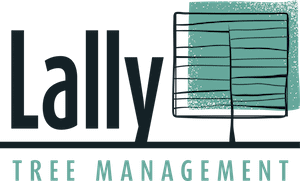While many people may have heard the term tree surgeon, arborist, or arboricultural consultant in relation to trees, very few actually know what the job entails. In this blog we’re asking what is an arborist?
How is an Arborist different to a Tree Surgeon or an Arboricultural Consultant?
Arbor is Latin for tree, hence, why we use the term arborist and arboricultural consultant.
Some tree surgeons would consider themselves an arborist and some arboricultural consultants would consider themselves arborists, however, a tree surgeon would not necessarily consider themselves an arboricultural consultant & vice versa.
While tree surgeons normally focus on the more physical aspects of tree care i.e pruning works, tree removal and stump grinding etc. An arboricultural consultant generally does not undertake physical works and will be more focused on inspections and report writing. These reports can include anything from health and safety surveys to assessing the likelihood of a tree causing subsidence to a structure. These two professions are linked but they have key differences listed below:
- A tree surgeon would normally require NPTC qualifications in chainsaw use, climbing trees, pruning, tree removal etc and possibly a National Diploma in Arboriculture or higher.
- A tree surgeon would require specialist insurance for tree climbing and saw use.
- A tree surgeon would require vans, chippers, stump grinders, chainsaws and much more to undertake their daily tasks
- An Arboricultural consultant would normally require a degree in arboriculture
- An Arboricultural consultant would normally require Professional indemnity Insurance
- An Arboricultural consultant could normally undertake his or her role with little more than a computer, a small hammer and pen and paper.
Although there are key differences between a tree surgeon and an arboricultural consultant, any person in either of these fields who has sufficient knowledge and experience and is responsible for the maintenance of trees can be considered an Arborist.
So what are the main duties of an Arborist?
An arborist can be responsible for the cultivation, management and health of trees both in private and public areas – making sure that they are not overgrown and reducing visibility near roads, or to keep them free from power lines and phone cabling.
An arborist can be called in to oversee any issue relating to the property development, health and safety of trees, helping to ascertain if a tree may cause an issue for mortgage companies and valuing trees in monetary terms.
Whenever a developer makes a request to build on land that contains trees, an arborist will be appointed to carry out a BS5837 survey to investigate whether trees can or can’t be removed, and to make sure that once the building is completed future issues will be avoided.
Arborists will also provide tree mortgage reports for lenders so that they can make more precise decisions regarding lending to prospective house buyers.
In private residences, arborists are called in for various reasons. These can include tree risk assessments to scrutinise whether or not a tree is safe to remain standing or should be removed, as well as tree valuation reports for individuals who wish to learn how much a tree in the their grounds is worth from a financial standpoint.
The advice of a trusted arborist will also be required in courts if there are legal disputes related to conservation areas with Tree Protection Orders (TPO), giving their professional opinion as to whether or not a tree can be altered or moved.
Matthew Lally has worked with trees across the UK & Europe for over 15 years. He holds a degree in arboriculture and is recognised as a LANTRA Professional Tree Inspector, and as a professional member of the Arboricultural Association. So, if you need of some friendly advice, a tree survey, a risk inspection, or help with a TPO, why not contact Lally Tree Management today?
